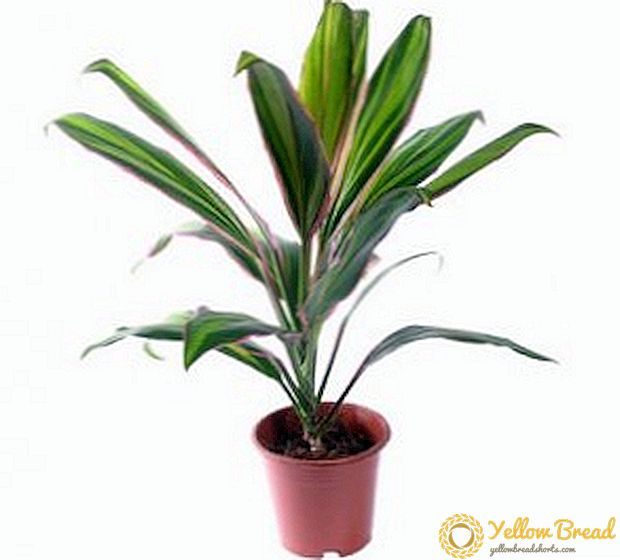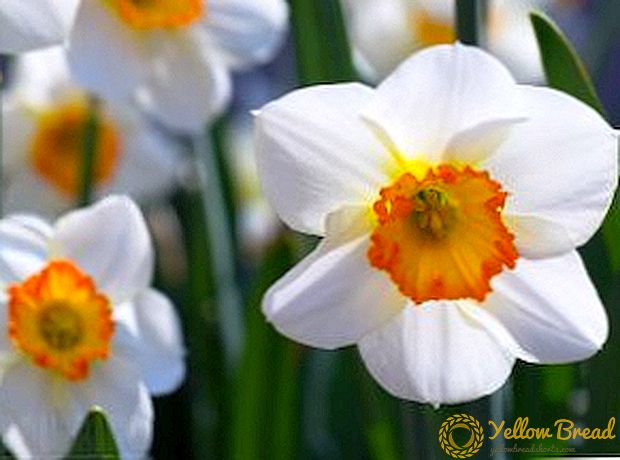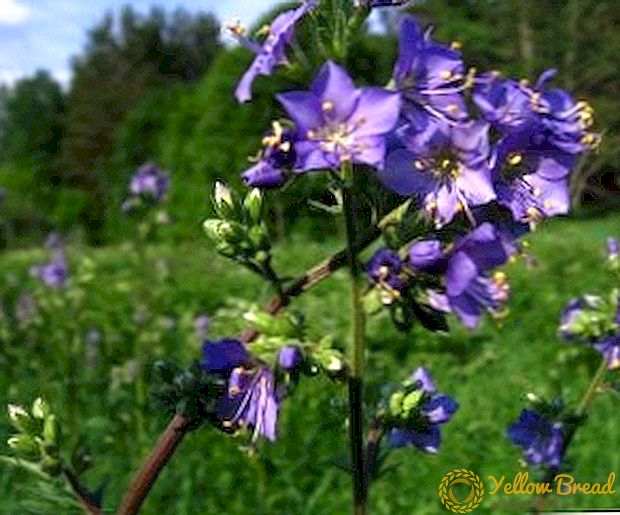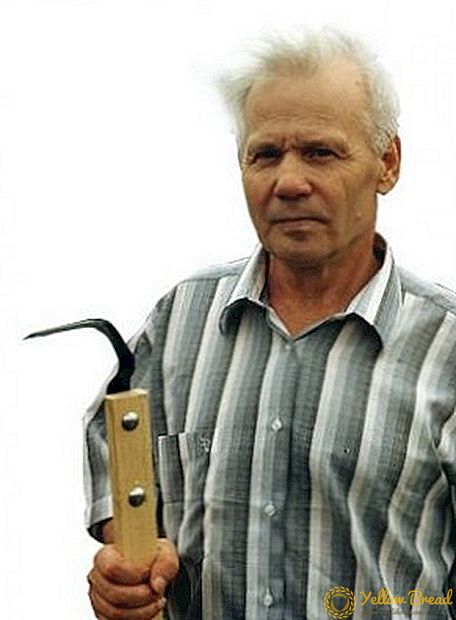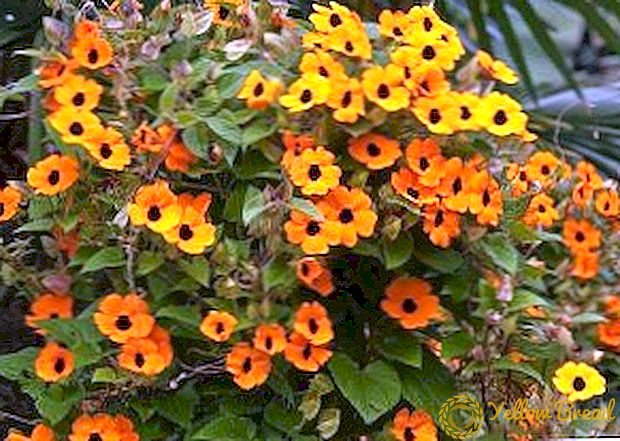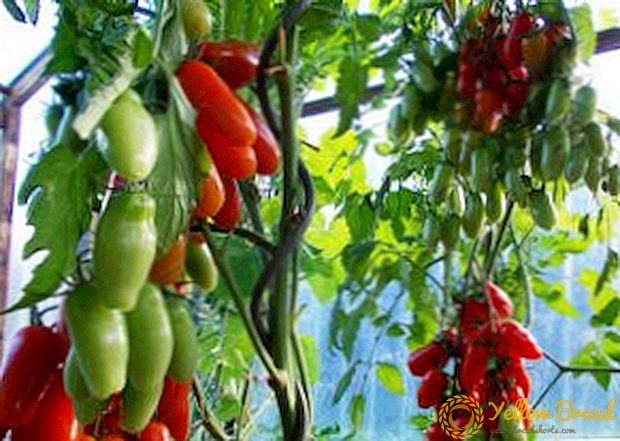 A variety of varieties of tomatoes is amazing.
A variety of varieties of tomatoes is amazing.
"Flush" - quite a new type of group for our gardeners "Flashen" Tomatoes, a description of the variety, and the subtleties of its cultivation, we consider in the article.
- Appearance and description of the variety
- Characteristics of the fruit
- The advantages and disadvantages of the variety
- Agrotechnology
- Seed preparation, planting seeds and care for them
- Seedlings and planting in the ground
- Care and watering
- Pests and diseases
- Conditions for maximum fruiting
- Use of fruits
Appearance and description of the variety
Tomato "Flash" is easily recognizable by a tall bush of indeterminate type, which reaches a height of 2 meters, and berries of the original form. The name of the variety was due to the similarity of the configuration of the fruit with the bottle, this is how it translates from German.

Characteristics of the fruit
The ripening period of tomato "Flashen" is average, yield - high. Fruits of medium size, 40-60 g, 6-8 cm long, are collected on a bush in large brushes.The elongated berries resemble sweet pepper pods or fingers. Ripe fruits are glossy, red.
The advantages and disadvantages of the variety
Tomato varieties "Flashen", as described has the following advantages:
- resistance to late blight;
- high yield;
- small amount of green mass;
- long, before the first frost, fruiting;
- compact fetus size;
- meatiness and a small amount of seeds;
- sweet taste;
- original decorative appearance.

At the same time, there are some drawbacks: because of the large size of the bush, it must be tied up and stepson, without a quality support, the bush can break under the weight of the fruit, the plants are vulnerable to top rot. 
Agrotechnology
Flaschentomaten grown according to the classical scheme. In the southern regions, mid-ripening tomatoes are sown on seedlings for the first 3 weeks of March, and in mid-latitudes from March 20 to April 10-12.
In the status of seedlings, tomatoes spend 6-9 weeks, after which the seedlings are planted in a permanent place.The harvest begins to ripen at 95-105 days.
Seed preparation, planting seeds and care for them
Seeds should be the correct form, free of defects and stains, they are sown dry or after soaking.
Soaking is preferable if it is a question of expensive sowing material as shoots should not be thinned. The process is carried out in a warm place, in a shallow container, on a wet napkin, covered with a lid. Seeds are placed there for 10-20 hours, for swelling, then planted for 1 seed in the ground. The use of ready-made substrates will eliminate the need to independently mix the humus and sod ground with additives for looseness and disinfect the soil. 
Picks are carried out in phase 2 of these leaves, the Flyastenomato tomato is a tall variety, and when transplanted into individual containers, seedlings are removed up to 30% of the root length. This technique stimulates the development of the root system. 
Seedlings and planting in the ground
For removal of seedlings at home are suitable plastic cups, with a volume of 450-500 ml, filled with soil.
Water the seedlings with water at room temperature, not allowing waterlogging.
For hardening seedlings, for 14-12 days before planting in open ground lower the temperature to 15-16 ° C, for a week - seedlings are carried out every day on the balcony, increasing the time spent in the open air from 4 to 24 hours. Signs of readiness to disembark at a permanent place:
- formed stem, thickened, no longer than 30 cm;
- there is at least 1 flower brush;
- formed internodes.
- well lit;
- protected from the wind;
- with the ability to establish a strong support for tall bush.
 Soil requirements:
Soil requirements:- neutral or slightly acidic PH;
- lightness, good breathability;
- fertility.
Care and watering
Feature of the variety - a long stem and large clusters with fruits, so the bushes need a strong high (up to 2 m) support and a reliable garter. Stakes or trellis are used as a support. They are located 10-12 cm from the bush on the west or north side. When tying up, the stem should not be pulled.  The culture is grown in 1 or 2 stems, leaving no more than 5 stepsons.
The culture is grown in 1 or 2 stems, leaving no more than 5 stepsons.

Pests and diseases
Tomato Flashen resistant to diseases of tomatoes, while for prevention is recommended to treat before planting seeds, soil, plants during the growing season antifungal and antiviral drugs. Prevention is especially important, since in a number of viral diseases - mosaic, bacterial wilt, stem necrosis, the affected bushes simply destroy.
Water the tomatoes only warm water. Watering with cold water leads to a number of fungal diseases, for example, clodosporia - olive spot. When moisture increases, favorable conditions for fungal infections are created, so it is important to control soil moisture.
Vertex rot to which fruits are exposed is the result of irregular watering and lack of calcium. Supplementing calcium supplements stops the deterioration of the fruit. 
Conditions for maximum fruiting
It needs timely watering in sufficient volume, application of fertilizers and biostimulants containing calcium. At the same time, chemical preparations are used 50-60 days before the first harvest.
Regular loosening of the soil improves breathability, regulates humidity.Removing weeds also increases yields. 
Use of fruits
Tomatoes "Flashen" - a universal variety, thanks to such virtues of fruit as:
- small sizes;
- exotic form;
- well stored after plucking from the bush;
- durable skin that does not burst from hot marinades;
- pulpiness, small amount of seeds;
- pleasant, pronounced taste and aroma.

Grade deservedly belong to the best without a doubt, it will become one of the most popular and beloved vegetable growers.

